Primates Midterm
1/80
There's no tags or description
Looks like no tags are added yet.
Name | Mastery | Learn | Test | Matching | Spaced |
|---|
No study sessions yet.
81 Terms
anthropodenial
The willful blindness or rejection of the shared human and animal characteristics that connect humans to the rest of the animal kingdom
proximate and ultimate causes
immediate/direct and evolutionary
descent with modification (darwin)
change in population over time
homology
shared biological trait (like a body part or gene) found in different species that was inherited from a common ancestor. al miskh
evolution (by natural selection)
those that survive and produce more have the highest fitness
fitness
an individual’s genetic contribution to future generations. hard to measure
reproductive success
an individual's relative genetic contribution to the next generation, encompassing the production and rearing of offspring to maturity and the ability to reproduce themselves
adaptive
biological attributes that allow an animal to follow a specific way of life (niche & habit)
variation
populations are composed of individuals that vary. some variation is heritable, maybe even adaptive. ex: primates have a relatively bigger brain size
spandrel
a phenotypic trait that is a byproduct of the evolution of some other characteristic, rather than a direct product of adaptive selection
clade
a group of organisms that consists of a single common ancestor and all of its evolutionary descendants
order
a taxonomic rank that groups related families based on shared characteristics and common ancestry. primates are grouped under the order level
ancestral trait
a characteristic inherited from a distant ancestor within a specific group of organisms. ex: having five digits (fingers)
derived trait
form of a trait that evolved from an ancestral form. ex: opposable thumbs
species
a fundamental biological classification of organisms. ex: homo sapiens
population
a group of individuals of the same species that live in the same geographic area. they share a common gene pool and can interbreed
genetic drift
evolutionary change due to change (random sampling error)
bottle neck effect
bottle with variation (marbles) in it, funnels and reduces amount of variability that goes through. No heritable genetic basis to make it more or less likely to go through. Then you end up with a different frequency of individuals.
founder effect
a new population is created from a small number of individuals migrating from a larger one. ex: the origin of platyrrhine primates came from a single founding event where an ancestor species ended up on an island that rafted across the atlantic ocean
gene flow
variation can be introduced from one population to another. individuals from different populations come into contact and mate with one another, produce fertile offspring that reproduce again.
hybridization
the process of crossing two different species, breeds, or varieties to create a new individual, a hybrid, with a combination of traits from both parents
synapomorphy
a shared, derived characteristic. ex: lactation, fur/hair
unguiculate
structures bearing or resembling claws or nails. ex: plesiadapiformes had claws
heterodonty
the characteristic of possessing teeth of different shapes and forms within the same animal's jaw
dental formula
for primates: 2.1.3.3 (refers to number of incisors, canines, premolars, and molars)
post-orbital bar
a bony ring that provides structural support and protection for the eye, formed by the connection of the frontal bone to the zygomatic bone. found in all primates
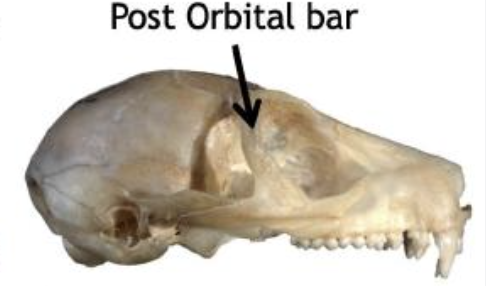
stereoscopic vision
the brain's ability to perceive depth and solidity in three dimensions by combining two slightly different images from each eye. for primates: with protected orbits for moving and locating prey
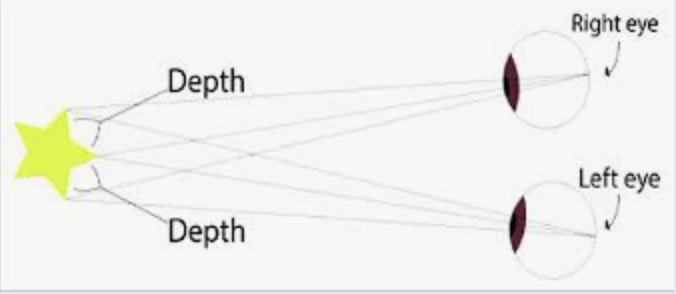
encephalization
larger brain for body size
life history
the strategies primates use to invest in growth, reproduction, and survival, characterized by long lives, late ages at first reproduction, and low fertility compared to other mammals
calcarine fissure
unique to primates that separates the first and second visual areas on each side of the brain. correlates with enhanced visual processing capabilities
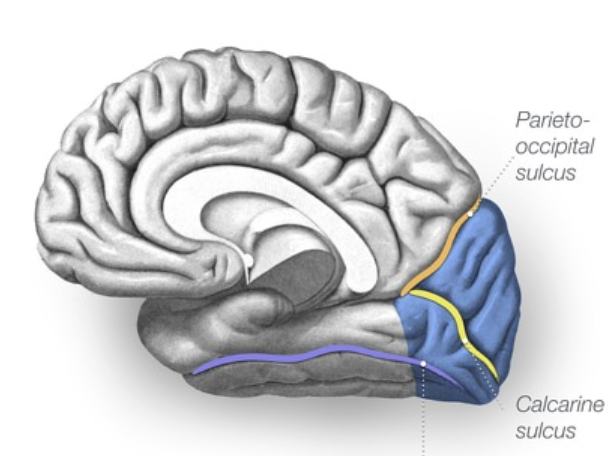
sylvian fissure
a prominent and ancient groove in the primate brain that separates the frontal and parietal lobes from the temporal lobe
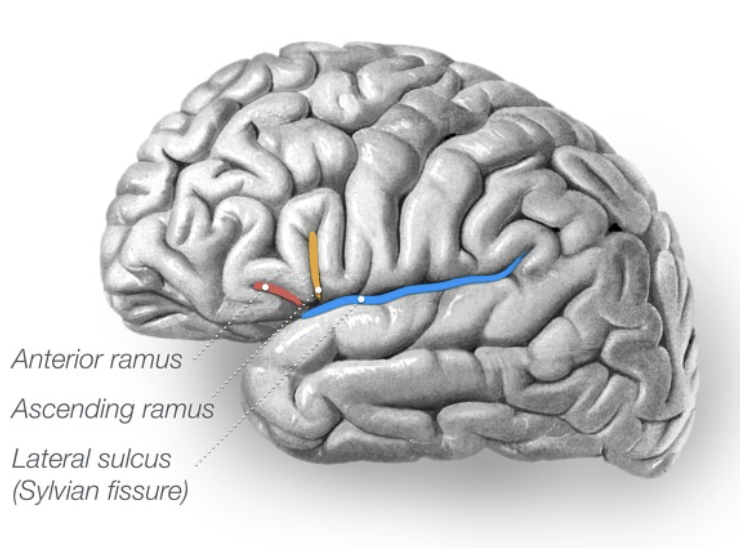
hallux
the big toe. for primates: a divergent, opposable digit used for grasping. humans losing this grasping ability was a crucial step in bipedal locomotion
pollex
opposable thumbs
generalized
(ancestral, often arboreal traits): pentadactyly (five digits). opposable thumbs, flat nails, stereoscopic vision, four tooth types, encephalized brain
taxonomy
denotes not only the hierarchical clustering of organisms, but should also reflect their evolutionary relationships with other organisms
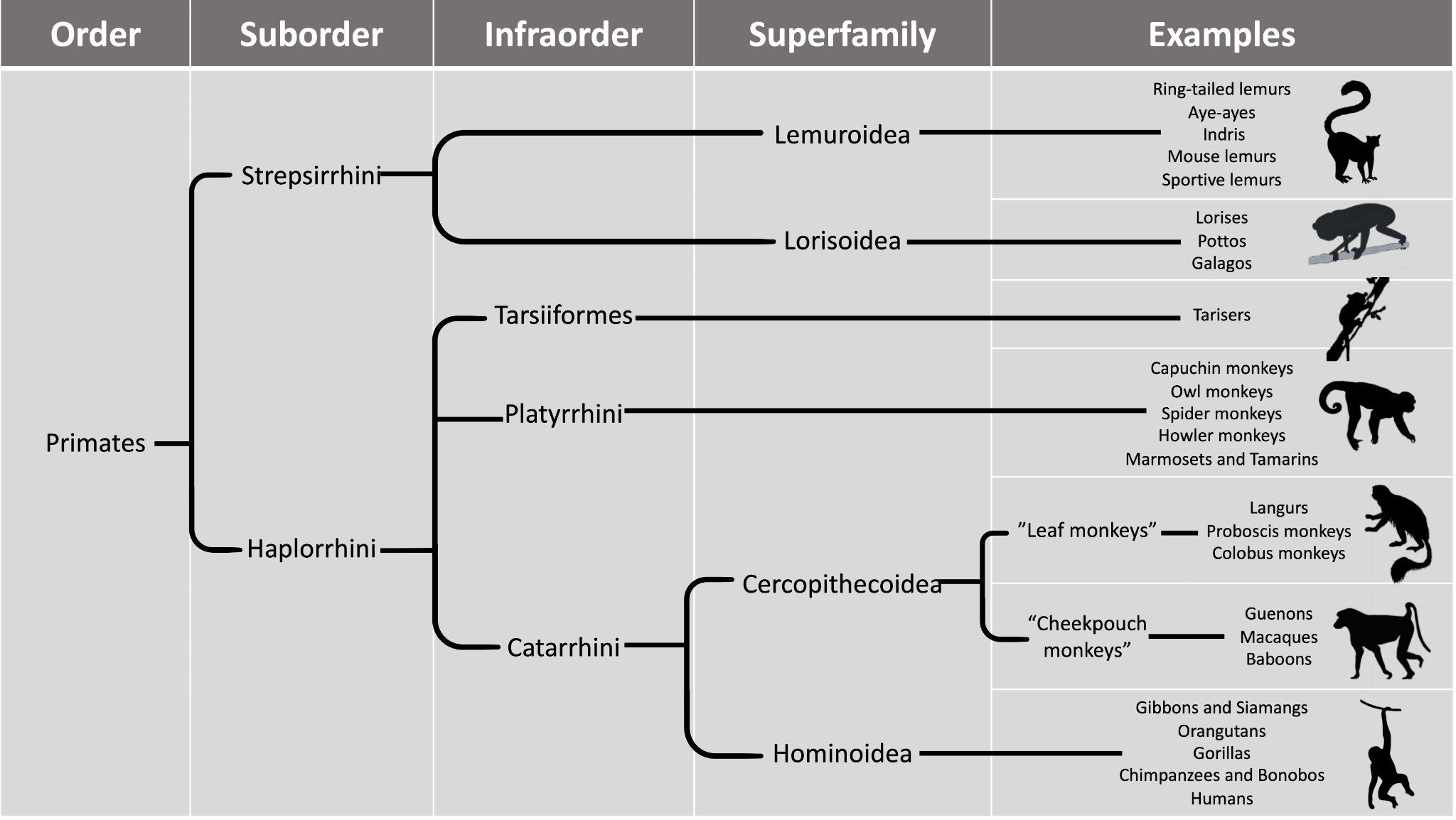
specialized
(derived specific adaptations): gibbons have extra-long arms for brachiating through trees while gorillas have adaptations for knuckle walking. aye-ayes have a long middle finger for tapping on wood. nocturnal primates have larger eyes.
primate traits
convergent eyes, post-orbital bar, trichromatic color vision, short snouts, opposable thumbs/big toes, pentadactyly, flat nails, tactile pads, highly arboreal, large brains, extended life histories, live in the tropics
stepsirhhines
a suborder. comprise the most ancestral-like of all primates: reliance on olfaction is not as reduced; nocturnal adaptations (tapetum lucidum), tendency toward smaller body sizes, small brains. also have derived traits like tooth comb.
lemurs and lorises

strepsirrhine dental formula
dental formula: 2133
strepsirrhine traits
wet nose, split lip, large eyes, grooming claw, tooth comb, mostly insectivorous, usually solitary, quadrupedality and slow clambering, vertical cleaning and leaping,
monophyletic
includes a common ancestor and all of its descendants, forming a natural evolutionary unit called a clade. more accurate picture
paraphyletic
contains a common ancestor and some, but not all, of its descendants, often by excluding a subgroup that has undergone significant evolutionary changes
kleiber’s rule
an animal's metabolic rate scales to the ¾ power of its body mass, meaning larger animals generally have lower mass-specific metabolic rates than smaller animals
jarman-bell principle
bigger primates require more calories than smaller primates. smaller primates require more calories per unit of mass
auditory bulla
universal primate characteristic. a bony casing for the middle ear, uniquely formed from the petrosal bone
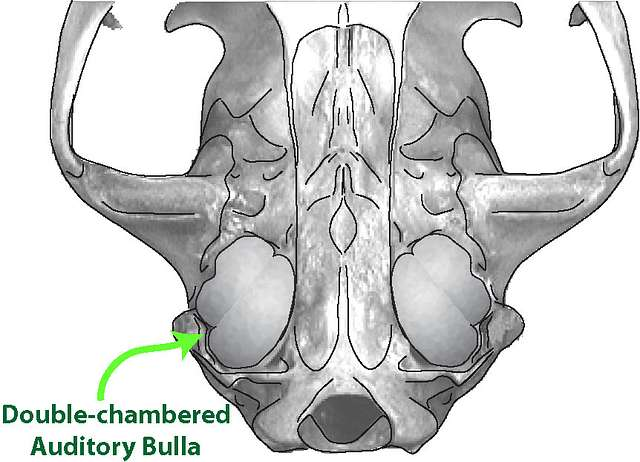
platyrrhine traits
small-medium body size, laterally flaring nostrils, auditory bulla ends in tympanic ring, highly arboreal, retain P2 tooth, found in neotropics
platyrrhine dental formula
2133
prehensile tail
tails capable of grasping and supporting their entire body weight. only atelidae have (within platyrrhini)
tarsier
retain many ancestral-like characteristics like strepsirrhines (small body size, nocturnal, insectivorous)
but share synapomorphies with haplorrhines (no tapetum lucidum, postorbital septum, complete lip and no rhinarium)
haplorrhines
include all monkeys, apes, and tarsiers
suborder
major division is between platarryhines and catarrhines
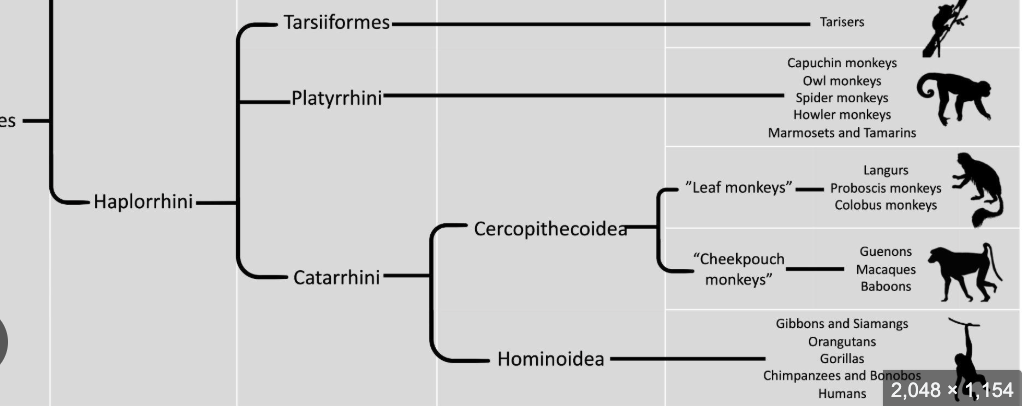
haplorrhine traits
tend to be larger bodied and brained, diurnal, gregarious, with reduced reliance on olfaction
catarrhines
include old world monkeys, great apes, humans, gibbons. two major families: cercopithecoids and hominoids
traits: narrow, downward-facing nostrils that are close together; flat fingernails and toenails; a dental formula of 2.1.2.3; a tubular bony external ear structure; no prehensile tail

bunodont molars
molars with rounded, low cusps for crushing and grinding. omnivores and herbivores
bilophodont
have two prominent, parallel ridges for shearing and grinding
hominoid traits
also known as apes.
larger bodied, more encephalized, adaptations for below-branch suspensory locomotion, have more mobile hip and shoulder joints, and lack a tail (have only vestigial coccyx instead of tail). tend to have longer lives and slower life history. simple molars. broad nose and broad palate. short trunk and long arms
generally found in restricted tropical forest habitats
cercopithecoid traits
also known as monkeys.
tend to be more quadrupedal and on the ground, narrow-bodied, and have smaller body size. more geographically diverse. biphodont molars, narrow nose and palate. long trunk.
plesiadapiformes
also known as pre-primates. existed during paleocene. have similar molars to true primates but are too different to be primate ancestor
plesiadapiform traits
ancestral conditions from mammals, no post-orbital closure, large snouts, small brains, claws, highly derived dentition (no Cs or Ps, incisor cusps, primate-like molars)
carpolestes simposoni
a paleocene plesiadapiform. had a mobile hallux, but still too different to be a primate ancestor
plagiaulacoid
a type of blade-like, most often serrated, pre molar tooth
euprimates
the earliest true primates that appeared during the eocene epoch, roughly 56 million years ago. they represent a key evolutionary step towards modern primates, showcasing characteristics such as grasping hands and feet, enhanced vision, and a reliance on arboreal habitats.
adapoids
true primates that were larger, diurnal, and folivorous.
dental formula: 2.1.4.3.
traits: key primate features like strepsirrhines. inflated auditory bulla, have a small snout, post-orbital bar with no closure, small brain, clinging and leaping adaptations, no claws, kind of quadrupeds with kind of long legs, size of a cat, big jaw muscles. Jaw (mandible) is fused together
omomyoids
true primate.
traits: Smaller, nocturnal, insect-frugivorous
similarities with tarsiers. intermediate (beginnings of a) orbital closure, bulla and tympanic tube, smaller than adapoids, large olfactory bulb, might have been nocturnal, leaping adaptations
anthropoids
also known as monkeys and apes
traits: postorbital closure, fused mandible, tympanic ring (like platyrrhines), frugivore-folivores, above-branch quadrupeds
notharctus tenebrosus
type of adapoid. existed during early eocene. dental formula: 2143. clinging and leaping adaptations
adapis parisiensis
type of adapoid. first eocene primate discovered. adaptations for climbing
teilhardina
omomyoid. existed during early eocene. possessed fingernails and specialized grooming claws. similar to marmoset
rooneyia
omomyoid. existed during eocene. large olfactory bulb, a nasolacrimal canal and olfactory recess similar to strepsirrhines. potentially diurnal
parapithecus
many features similar to platyrrhines. exited during oligocene in fayum, egypt. potentially a platyrrhine
aegyptopithecus
existed during oligocene in fayum, egypt. features similar to catarrhines. potentially a catarrhine.
epoch
a fixed point in time for astronomical measurements. paleocene, eocene, and oligocene. start to see first true primates transition between paleocene and eocene
molecular clock
biological tool that estimates the timing of evolutionary events by analyzing the accumulation of genetic mutations in DNA sequences
lumbar lordosis
the inward curve of the human lower spine. absent in most non-human primates. important adaptation for bipedal locomotion
metatarsal 1
big toe bone. often larger and more rigid than others, a trait linked to grasping and locomotion, especially in apes.
adaptive radiation
the rapid diversification of a single ancestral lineage into multiple new species, each evolving unique adaptations to fill distinct ecological niches. this process is often triggered by an ecological opportunity, such as dispersal to a new environment or the loss of competitors, and results in the evolution of different forms with various traits
primate origins hypothesis: arboreal, visual predation, angiosperm radiation
hypothesis that primate traits like grasping hands, forward-facing eyes, and acute vision evolved from: arboreal life (navigating trees), hunting small prey in complex environments, or exploiting fruit resources from the proliferation of flowering plants
primate origins hypothesis: caluromys (analogy)
woolly opossum genus caluromys (non-primate) serves as a living analogy for understanding early primate evolution.
similar selective pressures can lead to the emergence of primate-like traits. their specialized arboreal lifestyle offers an independent test of the major hypotheses for primate origins (how non-primates and early primates diverged)
quadrupedal adaptations
more stable center of gravity, increased limb flexibility for climbing, strong muscles for movement, a diagonal sequence gait, and tail use for balance. shoulder blades more to the sides.
suspensory adaptations
prehensile tail (for some), shortened lumbar spine, rotatable wrists, longer arms, shoulder blades more to the back
fossil dating
date ancient events based on radioactive element decay, providing direct geological ages for fossils themselves
molecular dating
estimates divergence times between species using rates of genetic change (DNA or amino acid sequences). often leading to older estimates than fossil records suggest due to discrepancies